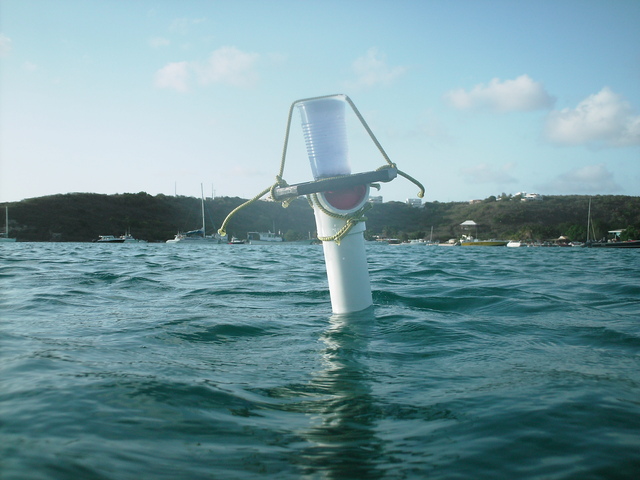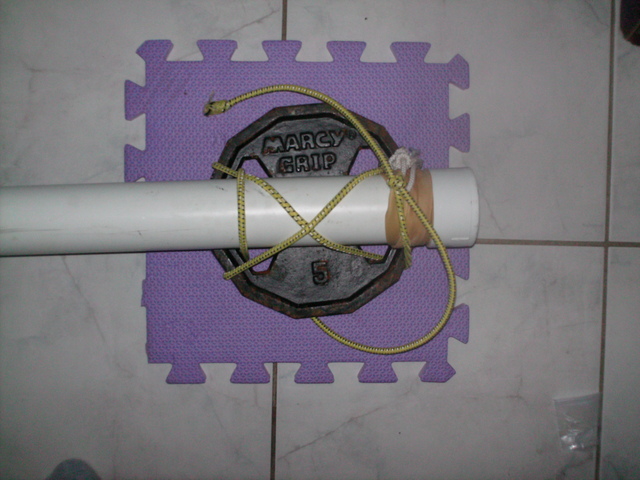User:Vincecate/Models/SparBuoy
Model details
This is made from a 10 foot long piece of 2-inch diameter schedule-40 PVC pipe. The bottom has a cap and a 5 lbs steel weight on it. The top has a "T" fitting that I cut off to make a flat thing I could attach stuff to. On top of this is a 2.5 lb steel weight and a cup with water and coloring in it. I have a small balloon inside the T to close off the pipe unless I want to put water in or take it out to adjust the ballast. I estimate between 1 and 3 lbs of water ballast is good.
July 27, 2008
<youtube v="Sgll7RjzDoc" />
I took my 10 foot Spar Buoy model to "Sandy Ground" harbor which has water deep enough for this model. The problem was the waves were unusually small, around 3 inches. This is around 6 feet for full scale, which is a common sized wave in the ocean around here. The wind was typical for Anguilla, like 15 to 20 MPH, so scaled up this is 75 to 100 MPH simulated wind. The model leans downwind significantly with just a cup on top. The pipe is 2 inches wide, or scaled up 50 inches in real size. The cup is around the same width but a real house would be much wider. So I suspect that a scale house on this model would catch so much wind that it would tilt too much to be safe. I think this is interesting and may test it. If we are able to always avoid hurricanes or big storms using migration this may not be a show stopper for the spar buoy, but it seems worth understanding.
This model also heaves up and down. The individual 3-inch waves don't tip the model. There were some very small swells that came in at times and might have contributed to the heave.
Moving through water
A related issue is pulling this through the water. To move a full scale one at 1 MPH is like moving a 1:25 scale model at 1/5 MPH. Moving at this speed without tipping it way over seem to require not just pulling at the top, but maybe half way down. With fins on my feet and pulling on the top of the model I can pull this through the water so fast that it lays nearly on its side. I wtill want to measure the force needed to pull the model at 1/5 MPH while vertical.

